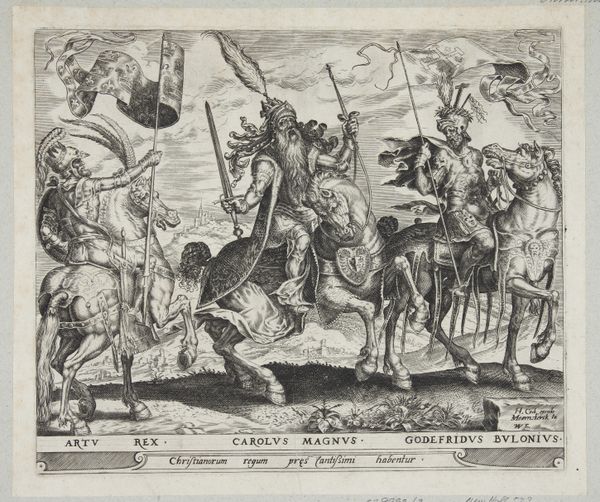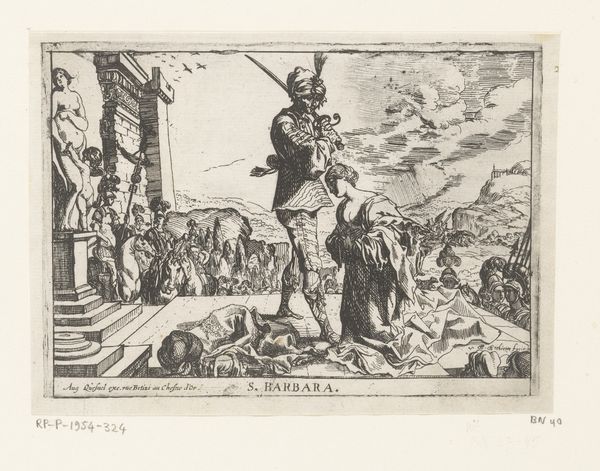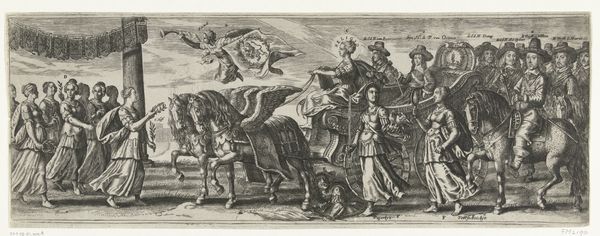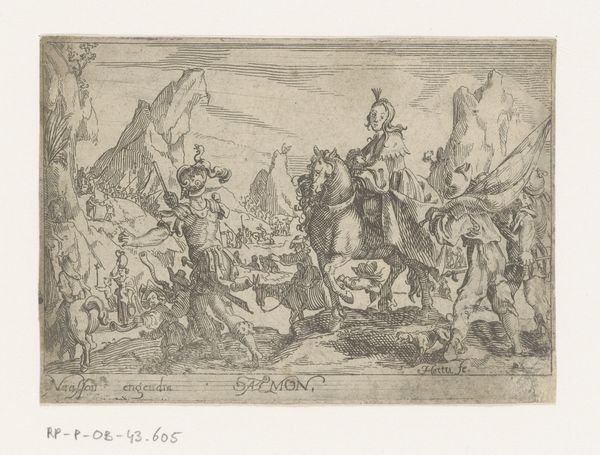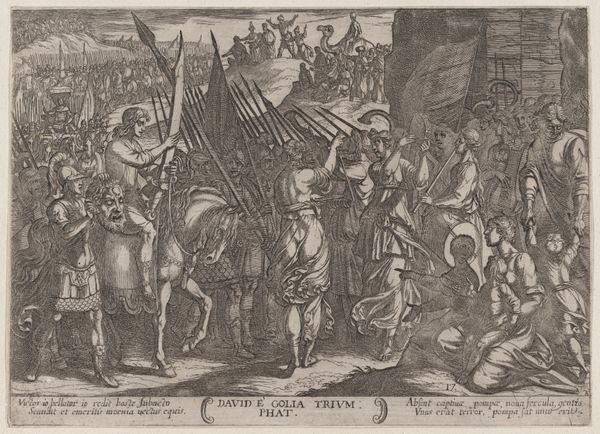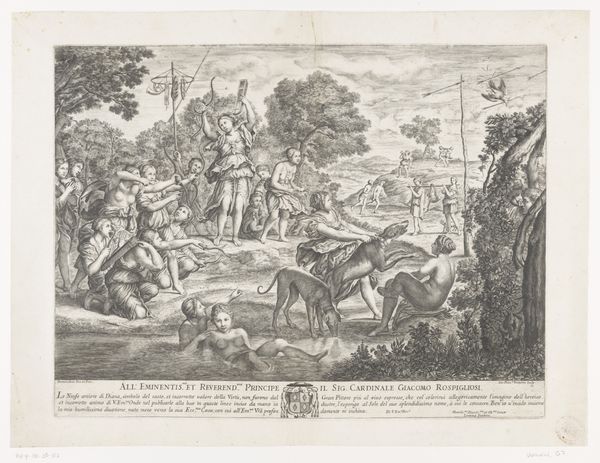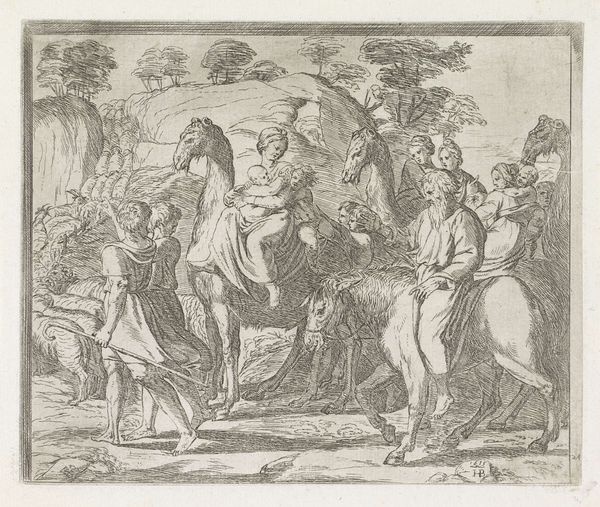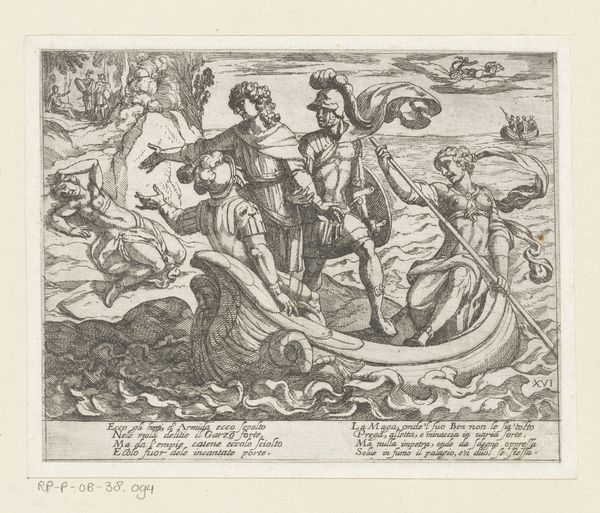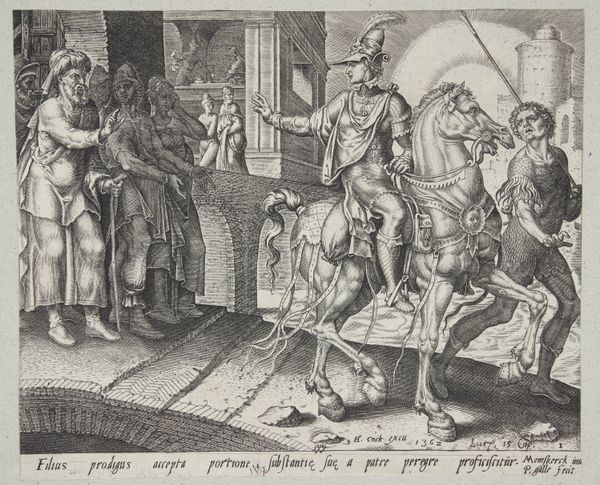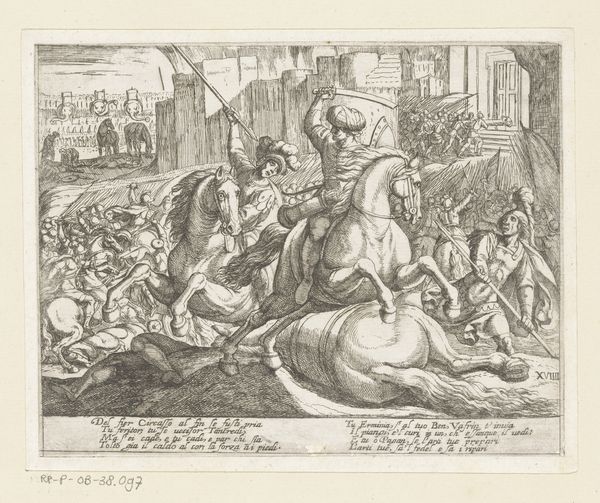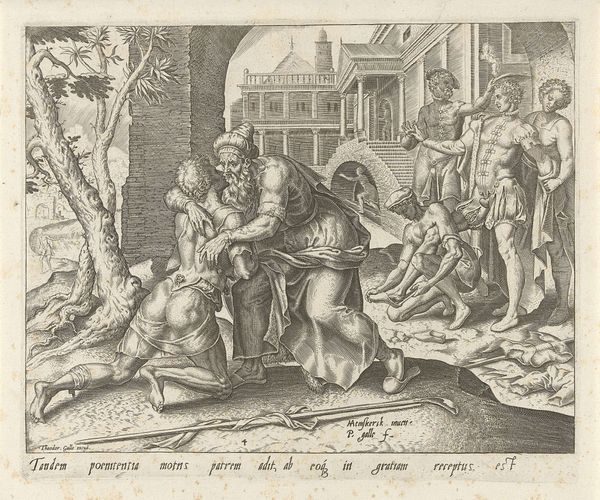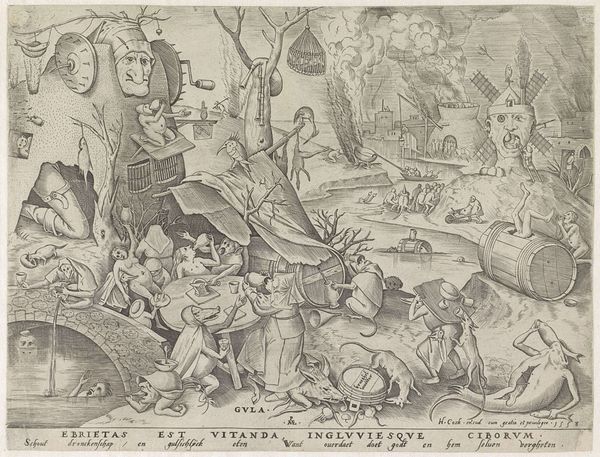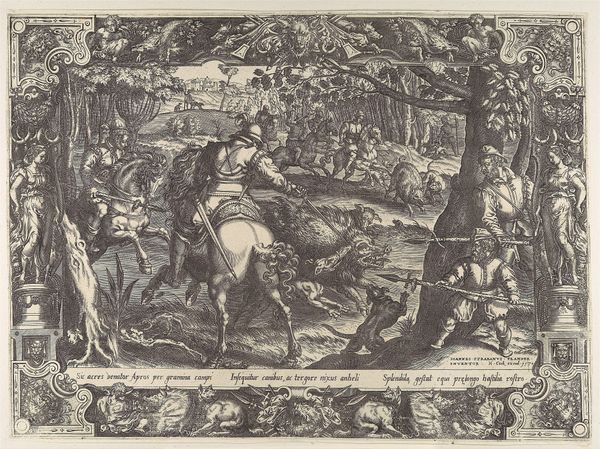
The combat of Hector and Achilles, and Achilles dragging the body of Hector around the walls of Troy 1531 - 1576
0:00
0:00
drawing, print, engraving
#
drawing
#
narrative-art
# print
#
war
#
figuration
#
soldier
#
horse
#
line
#
history-painting
#
italian-renaissance
#
engraving
Dimensions: sheet: 7 1/4 x 11 7/8 in. (18.4 x 30.2 cm)
Copyright: Public Domain
Curator: Well, this engraving from somewhere between 1531 and 1576, held now at The Met, depicts "The combat of Hector and Achilles, and Achilles dragging the body of Hector around the walls of Troy." Giulio Bonasone is the artist who created it. The piece jumps out because it almost feels like a storyboard strip for a tragic opera. Editor: Absolutely, it’s theatrical! The figures are caught in these dramatic poses, and the ruined city looming in the background really amplifies the sense of overwhelming sorrow. It also feels slightly distant; the way the bodies and soldiers are rendered seem more for design than for realistic rendering of figures in conflict. Curator: Interesting you say that. The medium, printmaking, demands a certain graphic quality. Look closely, and you will see that the meticulous lines create movement, and it emphasizes the story of the work, that is more powerful than detail to realistic form. Achilles, the ultimate symbol of heroic rage, defiles Hector's body, and Troy crumbles – it is all visualized. Editor: Indeed. Notice Achilles in the middle, spear raised, as he drags Hector’s lifeless form around Troy's walls. War imagery serves not just as illustration but as a window into a deeply internalized sense of grief and retribution. The use of horses—how do we see the significance of this visual symbol throughout time? The horse is representative of physical labor but can become associated with aristocratic status in Europe due to their usage in warfare and transit. How the war machine carries onward. Curator: The repetitive visual beat of soldiers, and the walls that stand in place in contrast to the sky and implied tornado show how the people persist after war, too. These soldiers have the image of their lives stuck with them – do they have an identity after this tragic fight? Editor: Maybe this is what Bonasone wanted to emphasize with this image – that what these figures undergo cannot leave them changed forevermore. As Achilles degrades the honor of Hector, Troy will not get its fallen soldier back to parade as their fallen hero. The drama is within us, because the tragedy cannot let us rest. Curator: So, maybe what is important is what happens after; what is learned or integrated into culture? What does glory or shame matter when the cost of it is so immense? This makes me see my perspective slightly altered now – from tragedy to the reflection after such devastation. Editor: Exactly. As symbols reverberate through the ages, their meanings are never truly fixed; we always rework their emotional value based on our circumstances, experiences, memories and hopes.
Comments
No comments
Be the first to comment and join the conversation on the ultimate creative platform.
